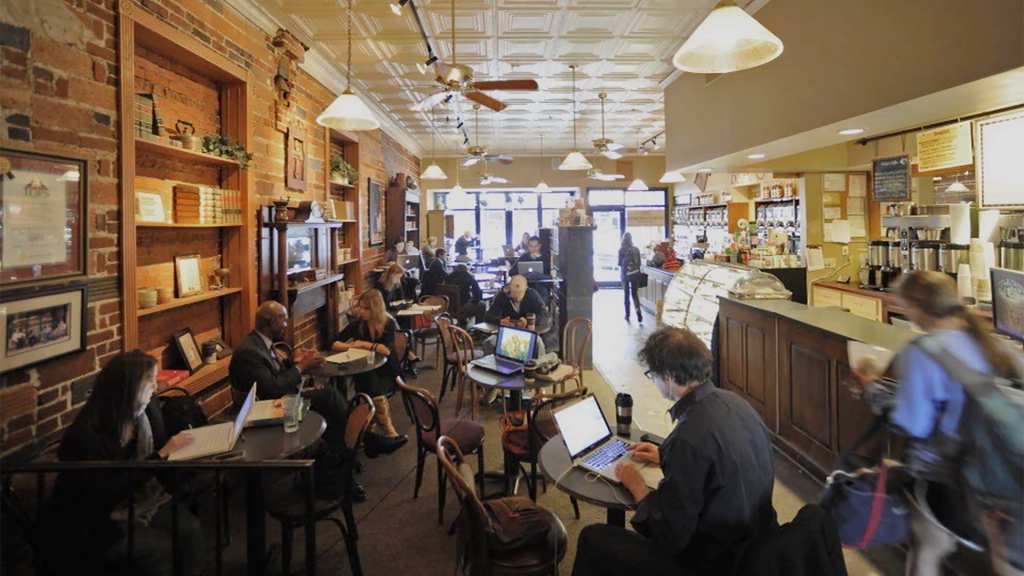
The social workplace
“If space can improve how we communicate, that is fundamentally what improves performance and what makes the company money. The workplace is really not about cost. It’s an investment in communication. “
-Ben Waber, CEO, Humanyze
When you can work from anywhere, why go to the office? Human connections and serendipitous encounters matter more than ever. Modern workplace design needs to be intentionally designed to foster collaboration and tacit knowledge exchange.
Humans evolved to work socially, not to work in isolation, going back as far as hunter-gatherers. Even with the mobile revolution, people still like working with other people. When they’re not, they feel isolated socially. And when they feel isolated socially, they begin to feel disconnected from their organizations and from their work.
Research shows that well-designed workplaces can facilitate serendipitous collisions of people and ideas, accelerating the flow of ideas and innovation. Widening the hallways, so people can easily stop and talk, and putting up whiteboards in publicly accessible areas, and designing workplace rituals like lunch to maximize knowledge exchange, are some examples of a work environment that encourages social activity and collaboration.














